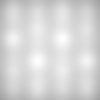You got some very spot on advice so far. One problem with strips is that the sammy strips are sold out by most distributor and not very available al though someone around might correct me.
You may wanna consider bridgelux strips aswell, both EB strips and Vesta strips are economic. Eb Eb stirps have a similar efficiency to Samsung, maybe just alittle less. Also dont need heatsink or anything if you run them at nominal. I like the vestas in particular: they offer something quite unique: dual 90 Cri spectrum 5000k and 2700k, in one strip. You could run a straight 5000k spectrum for vegg or both at the same time, coming to around 3850k which should give you a nice vegg spectrum. Or you can have both powered separately and dial in your spectrum after how plants react.
Cons
- they arent as efficient (as per datasheet) as the samsung strips. The lums per what come out lower, but as per photons they arent that far behind.
- 90 cri seems to stretch a little bit more in vegg than 80 cri. But theres also quite a few who love vegging (and flower) in 3000k 90cri due to the fast growth rates, not just stretch but stalks aswell. At least in what ive read around riu.
- if you find that only 5000k 90 cri works for you then the 2700 diodes wont be used, making them useless.
- no growlogs or testing of these strips available
Pros:
- less than 10$ per 50w strip
- the ability to dial in your spectrum
- 90 cri spectrum; vigorous growth due to added red and far red.
- the ability to dial in your spectrum, controlling stretch/internode distance etc. As stated above: this comes with a cost of efficiency; your total wattage would have to be 10-20% more than with samsung strips for equal amount of photons. But with 90 cri your photons would be "worth" more cause there is more deepred which is more easily used by the plant.
I cant recomend these based on experience as i havent set up my strips yet. But they sure look up to doing the part, especially the "half and half" spectrum. Attached here, in comparison to samsung 3000k, in absolute terms: you see how much more light you get with samsung. But i like the fact that the vesta spectrum is so "flat" that it literally covers every part of the action spectrum, much like a CMH which is said to vegg like a beast.

Ok, long ramble, im sure someone will come up with arguements against them, but is an option







![IMG_4439[250].jpg](/data/attachments/3253/3253614-afafc2116a5c9d45325cbfe4e07fda78.jpg)
![IMG_4438[249].jpg](/data/attachments/3253/3253615-5d0c8e31c6de1603e2f5bc02536e76ab.jpg)

